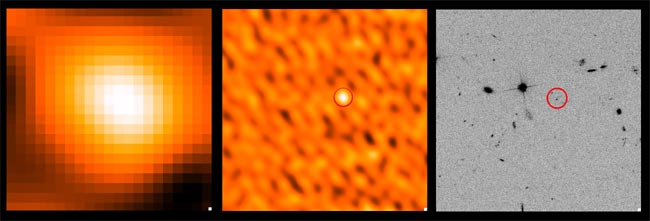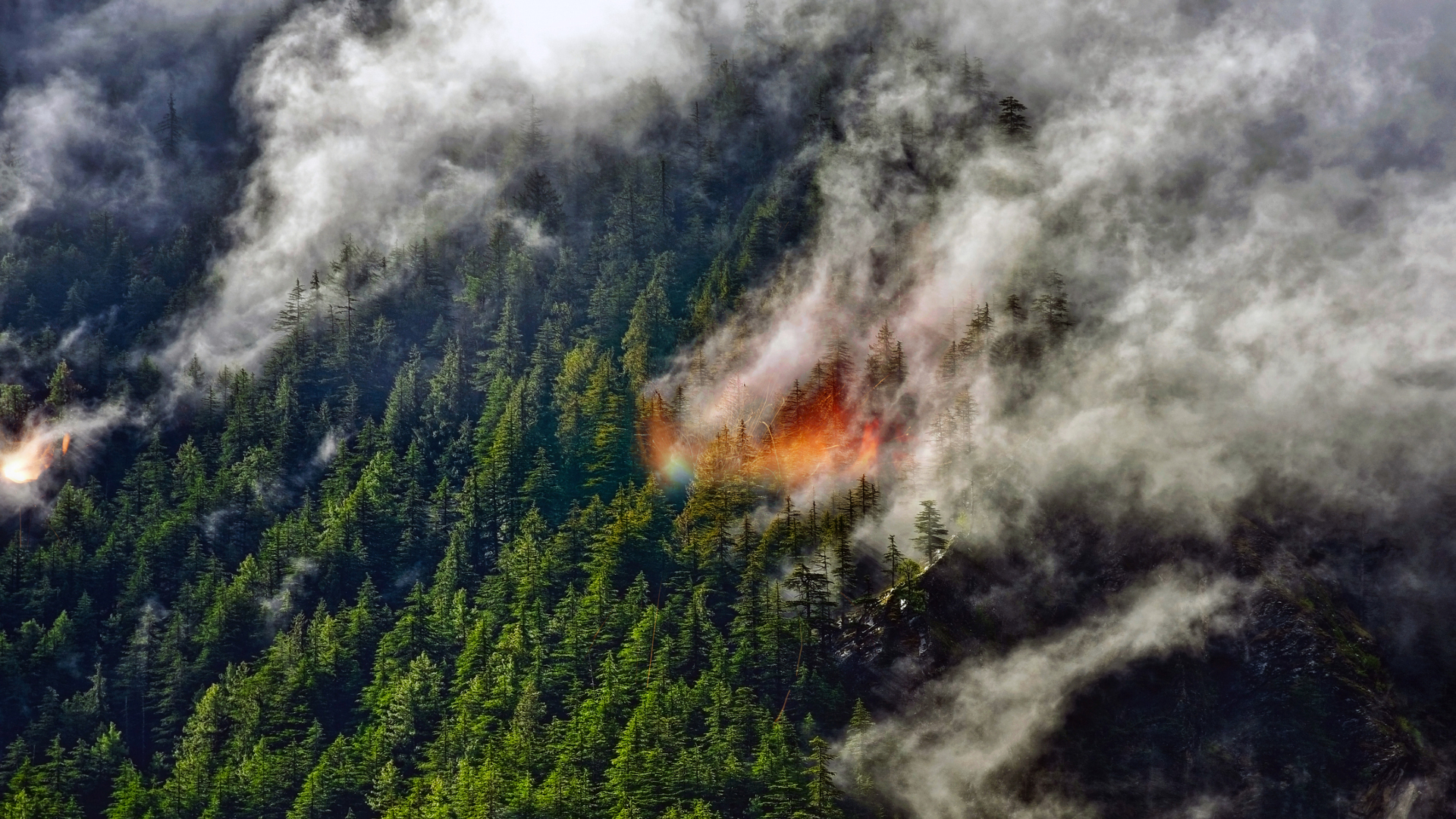Astronomers Spot Most Distant Bright Galaxies

Extremely bright galaxies with accelerated star-birth activity have spotted lurking in the remote, young universe and are the most luminous and massive galaxies ever seen at that distance.
The galaxies, located 12 billion light-years away, existed when the universe was less than 2 billion years old.
It's currently a mystery how such large, bright galaxies managed to form so shortly after the Big Bang. Most galaxies observed from that time are small and dim.
"It's a real surprise to find galaxies that massive and luminous existing so early in the universe," said study team member Giovanni Fazio of the Harvard-Smithsonian Center for Astrophysics. "We are witnessing the moment when the most massive galaxies in the universe were forming most of their stars in their early youth."
Stars in the galaxies form at a rate 1,000 times greater than in the Milky Way, making them intrinsically bright. However, much of their light has been missed until now because the galaxies are shrouded in thick clouds of dust and gas.
Astronomers discovered the galaxies using several telescopes to spot ultraviolet light leaking from the galaxies. The large ultraviolet outputs of the galaxies indicate high levels of star-birth, likely due to stellar collisions and mergers, the researchers think.
All of the bright galaxies appear confined to a very compact space, raising the possibility that some of them could collide to form super luminous galaxies powered by supermassive black holes called quasars.
Breaking space news, the latest updates on rocket launches, skywatching events and more!
The galaxies, to be detailed in an upcoming issue of the Astrophysical Journal, were discovered using the AzTEC imaging camera on the James Clerk Maxwell Telescope in Hawaii, the Smithsonian Submillimeter Array, NASA's Hubble and Spitzer Space Telescopes, and the Very Large Array radio telescopes in New Mexico.
- IMAGE GALLERY: Amazing Galaxies
- Top 10 Strangest Things in Space
- Top 10 Star Mysteries

Space.com is the premier source of space exploration, innovation and astronomy news, chronicling (and celebrating) humanity's ongoing expansion across the final frontier. Originally founded in 1999, Space.com is, and always has been, the passion of writers and editors who are space fans and also trained journalists. Our current news team consists of Editor-in-Chief Tariq Malik; Editor Hanneke Weitering, Senior Space Writer Mike Wall; Senior Writer Meghan Bartels; Senior Writer Chelsea Gohd, Senior Writer Tereza Pultarova and Staff Writer Alexander Cox, focusing on e-commerce. Senior Producer Steve Spaleta oversees our space videos, with Diana Whitcroft as our Social Media Editor.
